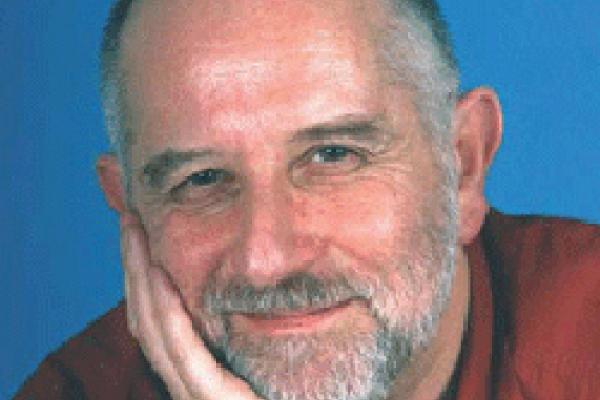
Dates & Times:
April 14 Lecture #2, 3:00 pm, CH 240
April 15 Lecture #3, 3:00 pm, CH 240
April 16 Colloquium (Lecture #1), 4:30 pm, CH 240
(Colloquium Tea at 3:30 pm, MW 724)
April 20 Lecture #4, 1:30 pm, CH 240
April 22 Lecture #5, 3:00 pm, CH 240
April 23 Lecture #6, 2:20 pm, McPherson 1015
Abstracts & Speaker Information:
Sir Michael Berry (University of Bristol)
![]()
![]() Download the lecture abstracts [pdf]
Download the lecture abstracts [pdf]
Lecture 1: Divergent series: from Thomas Bayes’s bewilderment to today’s resurgence via the rainbow
(April 16, 4:30pm, CH 240)
Michael Berry, H H Wills Physics Laboratory, Tyndall avenue, Bristol BS8 1TL, UK Following the discovery by Bayes in 1747 that Stirling’s series for the factorial is divergent, the study of asymptotic series has today reached the stage of enabling summation of the divergent tails of many series with an accuracy far beyond that of the smallest term. Several of these advances sprang from developments of Airy’s theory of waves near optical caustics such as the rainbow. Key understandings by Euler, Stokes, Dingle and Écalle unify the different series corresponding to different parameter domains, culminating in the concept of resurgence: quantifying the way in which the low orders of such series reappear in the high orders.
Lecture 2: Seeing and hearing the Riemann zeros, primes, random-matrix ensembles, random waves…
(April 14, 3:00pm, CH 240)
Michael Berry, H H Wills Physics Laboratory, University of Bristol Two optical arrangements are envisaged in which the Riemann zeros would separate the side lobes of far-field diffraction patterns. A counting function for the primes can be rendered as a sound signal whose harmonies are the Riemann zeros. The individual primes cannot be discriminated in this ‘music’; conversely, if the prime singularities are detected as a series of clicks, the Riemann zeros correspond to frequencies too low to be heard. The sound generated by the Riemann zeta function itself is very different: a rising siren howl, which can be understood in detail from the Riemann-Siegel formula. The eigenangles of random matrices in the three standard circular ensembles are rendered as sounds in several different ways. The different fluctuation properties of these ensembles can be heard, and distinguished from the extreme cases of angles that are distributed uniformly round the unit circle, and those that are Poisson-distributed. Similarly, in Gaussian random superpositions of monochromatic plane waves in 1D, 2D and 3D, the dimensions can be distinguished in sounds created from one-dimensional sections.
Lecture 3: Curl forces and beyond
(April 15, 3:00pm, CH 240)
Michael Berry, H H Wills Physics Laboratory, University of Bristol, UK Forces depending on position but which are not derivable from a potential, that is, forces with non-zero curl, give rise to dynamics that is not Hamiltonian or Lagrangian, while also being non-dissipative. Noether’s theorem does not apply, so the link between symmetries and conservation laws is broken. The physical existence of curl forces has been controversial and the subject of intense debate among engineers. But an example is familiar in optics: force on a dielectric particle in an optical field. Motion under curl forces near optical vortices can be understood in detail, and the full series of ‘superadiabatic’ correction forces derived, leading to an exact slow manifold in which fast (internal) and slow (external) motion of the particle is separated.
Lecture 4: Nature’s optics and our understanding of light
(April 20, 1:30pm, CH 240)
Michael Berry, H H Wills Physics Laboratory, Tyndall avenue, Bristol BS8 1TL, UK
Optical phenomena visible to everyone have been central to the development of, and
abundantly illustrate, important concepts in science and mathematics. The phenomena
considered include rainbows, sparkling reflections on water, mirages, green flashes,
earthlight on the moon, glories, daylight, crystals, and the squint moon. The concepts
include refraction, caustics (focal singularities of ray optics), wave interference,
numerical experiments, mathematical asymptotics, dispersion, complex angular
momentum (Regge poles), polarization singularities, Hamilton’s conical intersections
of eigenvalues (‘Dirac points’), geometric phases, and visual illusions.
Lecture 5: The singularities of light: intensity, phase, polarization
(April 22, 3:00pm, CH 240)
Michael Berry, H H Wills Physics Laboratory, University of Bristol. UK
Geometry dominates modern optics, in which we understand light through its
singularities. These are different at different levels of description. The coarsest level
is geometrical optics, where the singularities are caustics: focal lines and surfaces: the
envelopes of ray families. These singularities of bright light are classified by the
mathematics of catastrophe theory. Wave optics smooths these singularities and
decorates them with rich and ubiquitous interference patterns. Wave optics also
introduces phase, which has its own singularities. These are optical vortices, a.k.a
nodes or wavefront dislocations. Geometrically these singularities of dark light are
lines in space, or points in the plane. They occur in all types of quantum or classical
waves. Incorporating the vector nature of light leads to polarization singularities, also
geometrical, describing lines where the polarization is purely circular or linear. As
well as representing physics at each level, these optical and wave geometries illustrate
the idea of asymptotically emergent phenomena. The levels form a hierarchy, leading
to predictions of new phenomena at the quantum level.
Lecture 6: How quantum physics democratized music
(April 23, 2:20pm, McPherson 1015)
Michael Berry, H H Wills Physics Laboratory, University of Bristol
This lecture is a nontechnical but intellectual talk, suitable for the interested public.
Connections between physics and technological invention and aspects of human life
that seem far from science are both unexpected and unexpectedly common. And
rather than flowing one way - from physics to gadgets - the connections form an
intricate web, linking all aspects of human culture, in a way that frustrates our
convenient compartmentalisations and coarse interventions aimed at promoting
technology transfer. I will discuss this theme not abstractly but with examples,
ranging from music to the colour of gold, and explain how quantum physics helps me
do quantum physics (sic).
